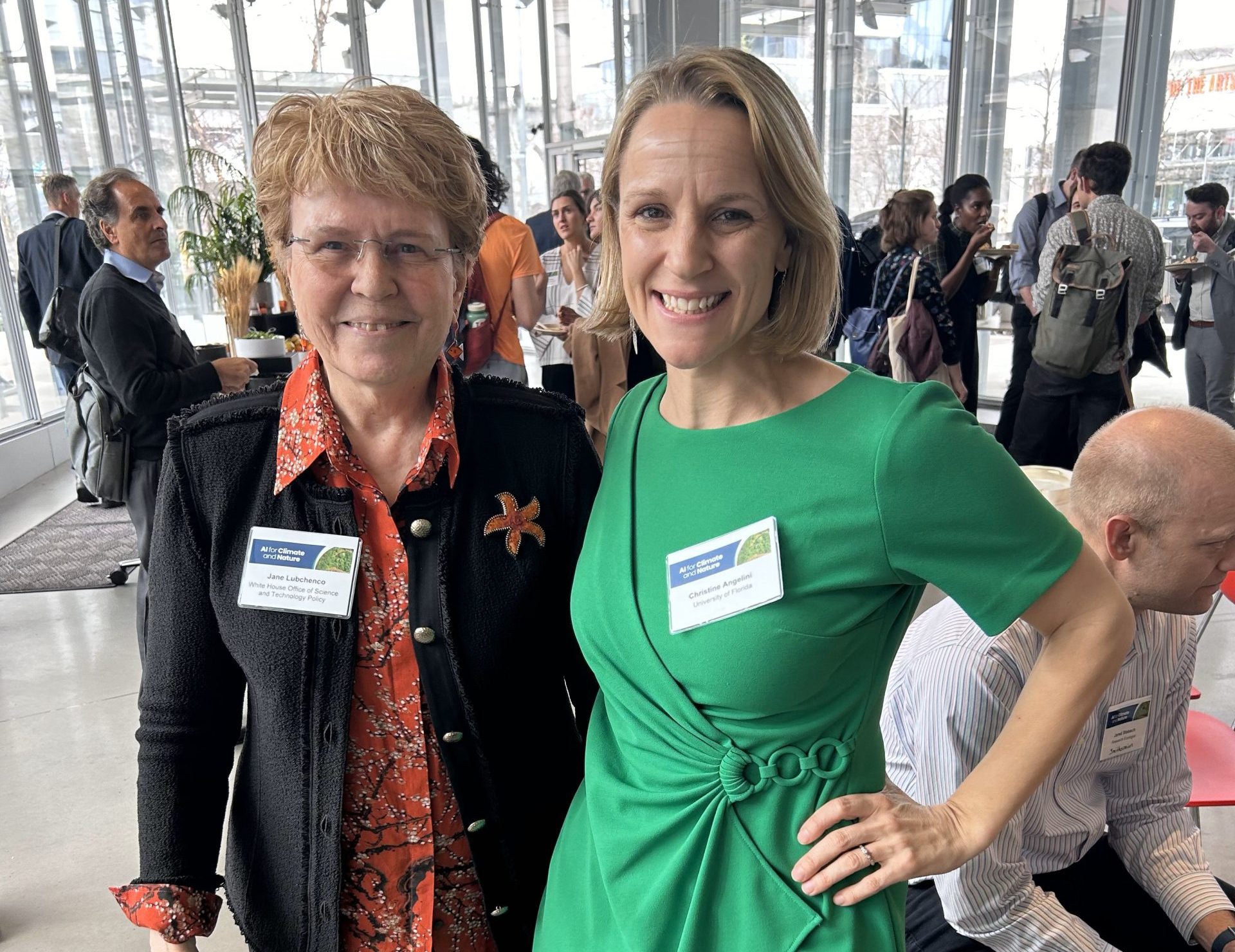New frontiers: AI for climate and nature
On April 10-11, I was honored to attend and speak at a spring convening on AI for Climate and Nature hosted in New York by the Bezos Earth Fund and Columbia University where we took a deep dive into how AI can help achieve climate and nature conservation goals. For two days, innovators, philanthropists, policymakers and industry experts explored how AI might accelerate response to climate related challenges on a wide range of topics – food security, decarbonizing cities, the data ecosystem of climate, building AI systems that center equity and inclusion, and the role of academia and philanthropy.

We explored trends in nature, food and energy, shared barriers that impede progress or scaling up of workable ideas, and the kinds of collaborations that could move the needle faster while doing things better. Using a Futures Thinking tool, we co-imagined the future of sustainable proteins, biodiversity conservation, and power grid optimization unlocked through innovations in AI.

During a round of lightning talks, I shared our center’s vision for building Sailfish, an open-source AI-foundation model to forecast the temperature, salinity, currents and water levels of coastal waters at the scale of human impact and 1,000-times faster than current models. Our team has taken a major step toward this goal by rewriting parts of the code base of the Regional Ocean Modeling System (ROMS), the current model standard, to optimize its efficiency in running on Graphics Processing Units (GPUs). Compared to its predecessor, our Python-based version of ROMS is 30-times faster and uses one tenth the energy. We can now run a simplified, but powerful, simulation of Hurricane Ian’s surge, for example, in 10 minutes on a single GPU. This is a mind-blowing acceleration in the model’s speed. Ultimately, Sailfish will empower coastal communities in Florida and around the world with AI driven climate and coastal hazard predictions.
The deep dives and conversations held at the AI for Climate and Nature Spring Convening in New York City fostered new insights into challenges and opportunities for AI in tackling climate and nature issues on cross-cutting topics. I appreciated the opportunity to connect with new peers across the ecosystem of AI and the environment and see the breadth and depth of innovation happening. I’m grateful to the Bezos Earth Fund and Columbia University for facilitating such forward looking and stimulating conversations. Many new ripples were made during the convening, from which I hope a new wave of solutions and collaborations to build global climate resilience will grow and spread.